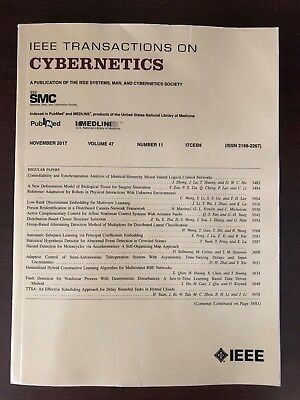Granule Margin-Based Feature Selection in Weighted Neighborhood Systems
IF 9.4
1区 计算机科学
Q1 AUTOMATION & CONTROL SYSTEMS
引用次数: 0
Abstract
Neighborhood rough sets are an effective model for handling numerical and categorical data entangled with vagueness, imprecision, or uncertainty. However, existing neighborhood rough set models and their feature selection methods treat each sample equally, whereas different types of samples inherently play different roles in constructing neighborhood granules and evaluating the goodness of features. In this study, the sample weight information is first introduced into neighborhood rough sets, and a novel weighted neighborhood rough set model is consequently constructed. Then, considering the lack of sample weight information in practical data, a margin-based weight optimization function is designed, based on which a gradient descent algorithm is provided to adaptively learn sample weights through maximizing sample margins. Finally, an average granule margin measure is put forward for feature selection, and a forward-adding heuristic algorithm is developed to generate an optimal feature subset. The proposed method constructs the weighted neighborhood rough sets using sample weights for the first time and is able to yield compact feature subsets with a large margin. Extensive experiments and statistical analysis on UCI datasets show that the proposed method achieves highly competitive performance in terms of feature reduction rate and classification accuracy when compared with other state-of-the-art methods.加权邻域系统中基于颗粒边缘的特征选择
邻域粗糙集是处理模糊、不精确或不确定的数值和分类数据的有效模型。然而,现有的邻域粗糙集模型及其特征选择方法对每个样本都是平等对待的,而不同类型的样本在构建邻域颗粒和评估特征好坏方面的作用是不同的。本文首先将样本权值信息引入邻域粗糙集,构造了一种新的加权邻域粗糙集模型。然后,考虑到实际数据中样本权值信息的缺乏,设计了基于边缘的权值优化函数,在此基础上提出了梯度下降算法,通过最大化样本边缘自适应学习样本权值。最后,提出了一种平均颗粒边缘度量用于特征选择,并开发了一种前向添加启发式算法来生成最优特征子集。该方法首次利用样本权值构造加权邻域粗糙集,能够得到具有较大余量的紧凑特征子集。大量的实验和对UCI数据集的统计分析表明,与其他最先进的方法相比,该方法在特征约简率和分类准确率方面具有很强的竞争力。
本文章由计算机程序翻译,如有差异,请以英文原文为准。
求助全文
约1分钟内获得全文
求助全文
来源期刊

IEEE Transactions on Cybernetics
COMPUTER SCIENCE, ARTIFICIAL INTELLIGENCE-COMPUTER SCIENCE, CYBERNETICS
CiteScore
25.40
自引率
11.00%
发文量
1869
期刊介绍:
The scope of the IEEE Transactions on Cybernetics includes computational approaches to the field of cybernetics. Specifically, the transactions welcomes papers on communication and control across machines or machine, human, and organizations. The scope includes such areas as computational intelligence, computer vision, neural networks, genetic algorithms, machine learning, fuzzy systems, cognitive systems, decision making, and robotics, to the extent that they contribute to the theme of cybernetics or demonstrate an application of cybernetics principles.
 求助内容:
求助内容: 应助结果提醒方式:
应助结果提醒方式:


